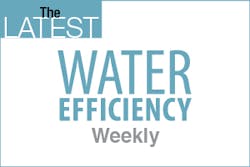San Joaquin River Named One of America’s Most Endangered Rivers
California’s San Joaquin River today received national recognition as one of the nation’s most threatened rivers due to excessive water diversions, poor water quality, and loss of wildlife habitat. An annual assessment by American River’s highlights the challenges facing the state’s second largest river–particularly the need for the State Water Resources Control Board to improve water quality and sustain salmon and other wildlife.
The Natural Resources Defense Council has advocated for the use of sound science by the water board to determine the flows that are needed to restore the health of the river. NRDC has fought for nearly three decades to help restore the San Joaquin River.
Separate from the effort to increase flows in the lower river, NRDC reached a historic settlement agreement in 2006 with the federal government and local water agencies to restore flows and salmon in the upper reaches. A San Joaquin River Restoration Program was created and has since achieved major milestones in bringing water to more than 60 miles of dried out riverbed and restoring salmon to their native grounds, as well as constructing water supply and flood control projects.
Following is a statement by Doug Obegi, senior attorney with the Natural Resources Defense Council’s Water Program:
“NRDC has fought for nearly three decades against the sorry conditions on the San Joaquin which have brought about this dubious distinction, just as we did the last time it made the list in 2014. A healthy San Joaquin River is essential to restoring the health of the Bay-Delta estuary, sustaining drinking water supplies for local communities and cities across the state, and sustaining native salmon populations and the thousands of fishing jobs they support.
“Today, the vast majority of water from these rivers is diverted, causing degraded water quality and declining salmon populations. It is long past time for the state water board to do its job and protect the important and beneficial uses of this river from continuing degradation. These efforts in the lower river–which was the focus of today’s Endangered Rivers listing–along with our work in the upper portion will help restore California’s second largest river.”
